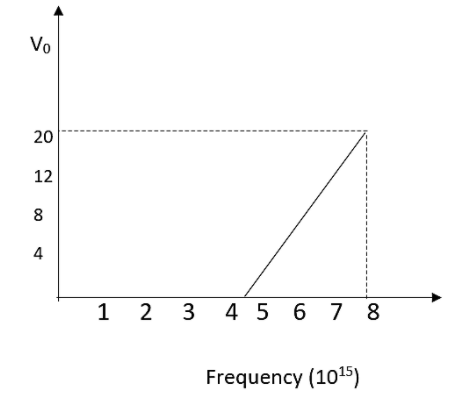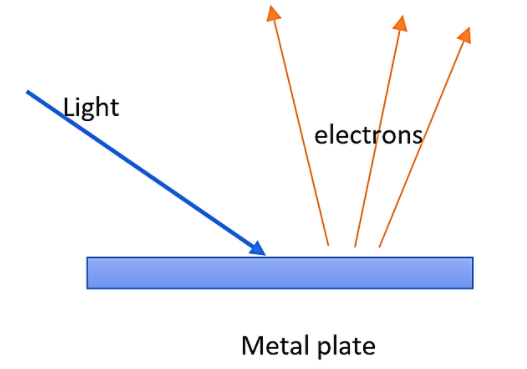Question
Question: For photoelectric effect taking place in a metal, the graph of the stopping potential \({{V}_{0}}\)...
For photoelectric effect taking place in a metal, the graph of the stopping potential V0 (in volt) versus frequency ν (in hertz) of the incident radiation is shown in figure. The work function of the metal (in eV) is

A.12.5B.14.5C.16.5D.18.5
Solution
first of all check the graph thoroughly in which the x intercept is the point up to which photoelectric effect will take place. Below this point there will be no photo electric effect taking place. The equation for the work function is also helpful in solving this question.
Complete step by step answer:
Firstly, let us take a look at what actually the photoelectric effect means. Photoelectric effect is defined as a phenomenon in which electrically charged particles are ejected from or within a substance when it is absorbing electromagnetic radiation. The effect is sometimes explained as the ejection of electrons from a metal plate when light shines on it.

The x-intercept in the graph given is being the last point up to which only the photoelectric effect is non zero. Below this point there is no photo electric effect.
Therefore the work function of the material is given by the equation,
W=hν0
Where h is the Planck’s constant, ν0 is the threshold frequency.
From the graph we got an information that,
ν0=4×1015Hz
h=6.63×10−34Js
Substituting this values in the equation,
W=6.63×10−34×4×1015W=26.52×10−19J
Now we have to convert this into electron volt
W=1.6×10−1926.52×10−19W=16.5eV
So, the correct answer is “Option C”.
Note: The phenomenon has been fundamentally peculiar in the progression of modern physics. The photoelectric effect stays important in the research areas from materials science to astrophysics and also produces the basis for a variety of useful equipment. The device using this effect is having a fast response time.
